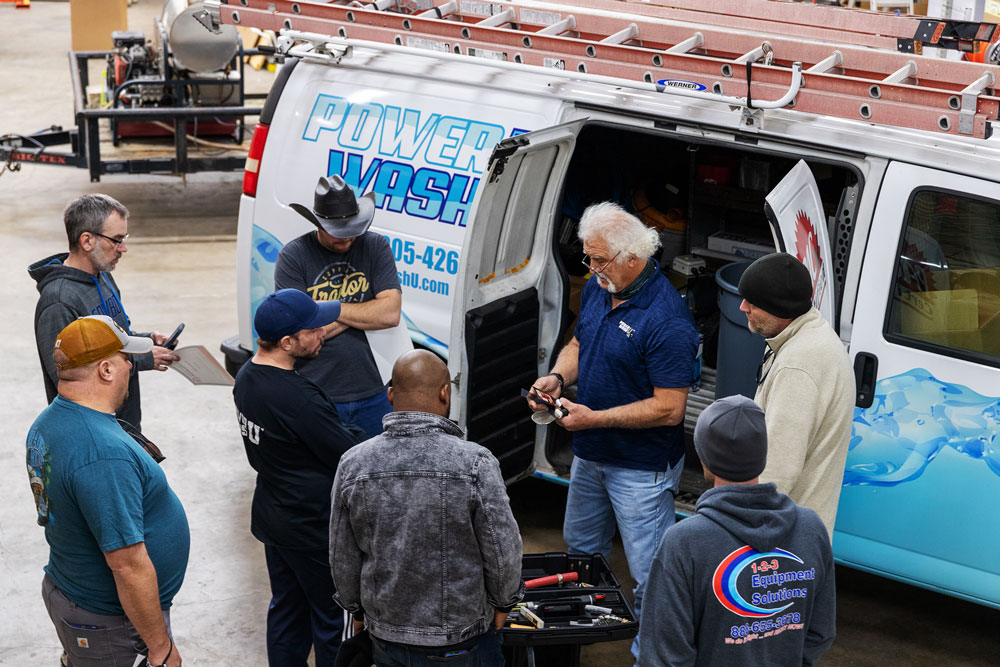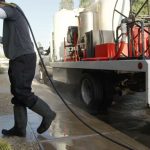As your power washing business grows, you’ll hit a tipping point — one where you can’t handle every job, every call, or every task alone. That’s when hiring help becomes not just a good idea, but a necessity. 💼💦
But hiring alone isn’t enough. If you want your new employees to represent your brand, wow your clients, and deliver consistent quality, you need a repeatable, proven training and onboarding system. Without one, every new hire is a gamble — and your reputation is on the line. 🎲😬
In this article, we’ll cover how to build an onboarding system that gets new hires up to speed quickly, reinforces your company values, and keeps your quality high — no matter who’s holding the wand. 🧽📈
🧠 Why Onboarding Matters More Than You Think
Training isn’t just about teaching someone to pressure wash a driveway. It’s about:
- Instilling the standards your company is known for
- Teaching safe and efficient workflows
- Preventing costly mistakes and callbacks 💰
- Giving new hires confidence and direction
- Protecting your business’s brand reputation ⭐
A great onboarding system reduces confusion, turnover, and inconsistency. It’s not an expense — it’s an investment. 💼📘
📋 Step 1: Create a Structured Training Plan
Winging it doesn’t work. Instead, build a structured onboarding checklist that every new hire follows.
Break training into clear stages, such as:
- Introduction to the Company
- Mission, values, team culture
- Safety protocols
- Customer service expectations 🤝
- Equipment Overview
- Pressure washer anatomy
- Common attachments and how to use them
- Maintenance and troubleshooting 🛠️
- Cleaning Techniques
- Difference between soft wash and high-pressure cleaning
- Surface-specific techniques (wood, concrete, siding)
- How to identify and avoid damage 💦
- Job Site Workflow
- Arrival and setup
- Pre-inspection walkthrough
- Post-job clean-up and customer walkthrough 🧼
- Communication and Conduct
- How to talk to customers professionally
- What NOT to say
- When to escalate an issue to the owner or manager 📞
🧠 Bonus Tip: Document everything in a digital or printed manual so each trainee receives the same information.
🎥 Step 2: Use Visual Training Aids
Most people learn faster by seeing and doing — not reading a thick manual.
Include:
- Video walkthroughs of jobs (record your own jobs!) 🎥
- Before-and-after photo examples
- Safety gear demonstration videos
- Diagrams of equipment and chemical usage
- Hands-on practice under supervision 👷♂️
If you can create a short training video series or digital course, you’ll multiply your training efficiency — and ensure consistency even if you’re not present.
📅 Step 3: Set a Training Timeline
Don’t expect a new hire to be fully functional in 24 hours. Set realistic milestones such as:
- Day 1–2: Shadow experienced crew, observe and ask questions
- Day 3–5: Assist on jobs, begin handling equipment
- Week 2: Run smaller jobs with supervision
- Week 3–4: Fully operational on standard jobs
- 1-Month Review: Evaluate performance, address gaps, reinforce strengths ✅
This timeline helps you track progress and gives the new hire confidence and clarity about what’s expected.
✅ Step 4: Define “Done Right” — Every Time
Consistency comes from clarity. Don’t assume your crew knows what “clean” means to you — show them.
Create a checklist for what a job well done looks like, such as:
- Uniform and gear in good condition 👕
- Property walk-around before starting
- No streaks, missed spots, or chemical stains
- Equipment packed neatly after use
- Customer given a verbal walk-through
- Photos taken and uploaded before leaving
Train your team to treat every job like it’s a Google review waiting to happen. ⭐
💬 Step 5: Encourage Open Communication
Your new hire will have questions — and may make mistakes. That’s normal.
Foster a culture where team members:
- Ask questions freely
- Admit when they’re unsure
- Feel safe to report accidents or errors
- Are encouraged to suggest improvements
Mistakes are teachable moments. Ignoring them — or punishing honesty — leads to hidden problems and long-term issues. 🙈🔧
🎯 Step 6: Reinforce With Feedback and Coaching
Don’t assume someone is doing a good job — confirm it with feedback.
Offer:
- Positive reinforcement when they hit the mark
- Constructive feedback when they miss it
- Regular check-ins during the first 90 days
- Clear documentation of performance reviews
Use feedback as a way to coach, not criticize. Your goal is to build up confident, capable employees — not just compliant ones. 🗣️👂
🚀 Step 7: Promote Ownership and Growth
Once a new hire is fully trained, don’t stop there. Encourage them to:
- Take pride in quality work
- Train newer hires as they grow
- Take on leadership roles (even in small ways)
- Share client feedback with the team
- Offer ideas for efficiency and improvement
People stick around when they feel valued and involved. Empower your team, and they’ll act like owners — not just employees. 💪🏽👊🏽
🧽 Final Thoughts: Build a Crew You Can Trust
When you’re not the only one on the job site, quality comes down to your systems — not just your skills.
A well-trained crew will:
- Protect your reputation
- Deliver consistent results
- Handle more jobs
- Free you up to grow the business
- Keep customers coming back
Here’s your training system checklist:
- ✅ Document a clear onboarding process
- ✅ Use visual and hands-on learning
- ✅ Set a structured timeline
- ✅ Define clear job standards
- ✅ Foster open communication
- ✅ Provide consistent coaching
- ✅ Encourage growth and ownership
You’re not just building a team — you’re building a brand that customers trust, no matter who shows up in the truck. 👷🧽🚚


